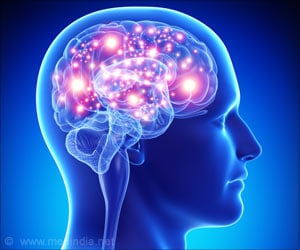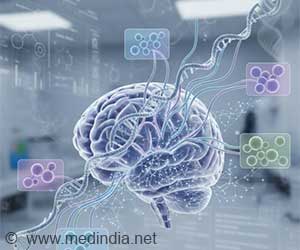In patients with acute traumatic brain injury regaining consciousness was associated with improvements in sleep-wake states.

- After traumatic brain injury (TBI), people experience major sleep problems.
- The thinking abilities and level of consciousness go hand-in-hand with improvements in sleep patterns.
- When people did not attain a certain level of consciousness to keep them aware and awake, they did not generate good sleep-wake cycle.
- When sleep cycles improved, people gave appropriate response to stimuli and their ability to recall the tasks improved.
TOP INSIGHT
Recovery after a traumatic brain injury can be assessed by monitoring the patient’s sleep-wake cycle.
Traumatic Brain Injury
Head injury or traumatic brain injury (TBI) occurs due to sudden trauma to the head or brain, resulting in brain damage. It is the leading cause for disability among children and young adults.
Although traumatic head injury can affect people of all ages, young adults between the age of 15 and 24 years and those above 75 years face an increased risk of head injury.
Every year, approximately 1.4 million people experience a head injury, out of which about 50,000 individuals die. Annual hospital admissions due to TBI are more than 230,000 people.
A majority of the head injuries, about 50%, are as a result of road traffic accidents involving motorbikes, automobiles and bicycles.
Other less common causes of TBI include violence, such as gunshots, firearm assaults, and child abuse, which accounts for approximately 20%. Sports injuries are responsible for 3% of head injuries.
A good sleep-wake cycle is said to be achieved when a person is alert and active during the day and gets uninterrupted sleep at night.
It is also known as circadian rhythm which is a biological process that follows an internal cycle of approximately 24 hours.
Light will stimulate the production of cortisol, serotonin, other hormones and neurotransmitters that gets a person up and about and causes the blood pressure and body temperature to rise.
At sunset, the body receives another of nature’s cues and responds to dusk and ultimately the night’s darkness. As the sun goes down, the body will produce and secrete the hormone melatonin, and blood pressure will drop as the body prepares for and eventually falls off to sleep.
This rhythm controls the timing, quantity and quality of the hormones and neurotransmitters the body produces and eventually secretes.
Testing the Link
To test their hypothesis, research team recruited 30 people, aged 17 to 58 years, who suffered from moderate to severe TBI. Most of the patients were admitted to the hospital in a coma stage and all y received intensive care initially.
Twenty people suffered from motor vehicle accident related TBI. Seven people suffered from fall related TBI. Two people had recreational or sports injuries and one person had received a blow to the head.
They were hospitalized for an average of 45 days and the study began on an average of 21 days into a person's stay.
Patients wore an activity monitor on their wrist for sleep recording and they were monitored daily for an average of 11 days for level of consciousness and cognitive functions like thinking, using a Rancho Los Amigos (RAL) scale, that ranges from levels 1 to 8.
In level 1 of the scale, the patient appears asleep and does not respond to external stimuli and in level 8, patient is awake, oriented and responds to external stimulus.
Findings of the Study
Findings showed a linear relationship between improvement in the level of consciousness and thinking abilities and different measures of quality of sleep.
One measure of sleep was the daytime activity ratio that is the percentage of activity that occurs during the day. The findings showed that activity occurs throughout the day and night immediately following the injury.
Participants reached an acceptable sleep-wake cycle, with a daytime activity ratio of at least 80%, at the same point when they emerged from a minimally conscious state.
At a score of 5 on the Rancho Los Amigos scale, people still had inadequate sleep. At this level, they were confused and gave inappropriate responses to stimuli but were able to follow simple commands.
When a score of 6 is attained on the Rancho Los Amigos scale, sleep-wake cycles reached adequate levels At this stage, though people depended on external stimuli, they gave appropriate responses. They were able to remember re-learned tasks, but could not remember new tasks.
Conclusion
When adjusted for the amount of time that had passed since the injury and the amount of medications received by the patients, results did not vary.
"It's possible that there are common underlying brain mechanisms involved in both recovery from TBI and improvement in sleep," said Gosselin. "Still, more study needs to be done and future research may want to examine how hospital lighting and noise also affect quality of sleep for those with TBI."
The study is published in Neurology, the medical journal of the American Academy of Neurology.
References
- Circadian Rhythm Sleep Disorders - (https://www.medindia.net/patients/patientinfo/sleep/circadian-rhythm-sleep-disorders.htm)
- Head injury / Brain Injury - (https://www.medindia.net/patients/patientinfo/headinjury_causes.htm)
- Nadia Gosselin et al. Parallel recovery of consciousness and sleep in acute traumatic brain injury. Neurology; (2016) doi.org/10.1212/WNL.0000000000003508
 MEDINDIA
MEDINDIA



 Email
Email










